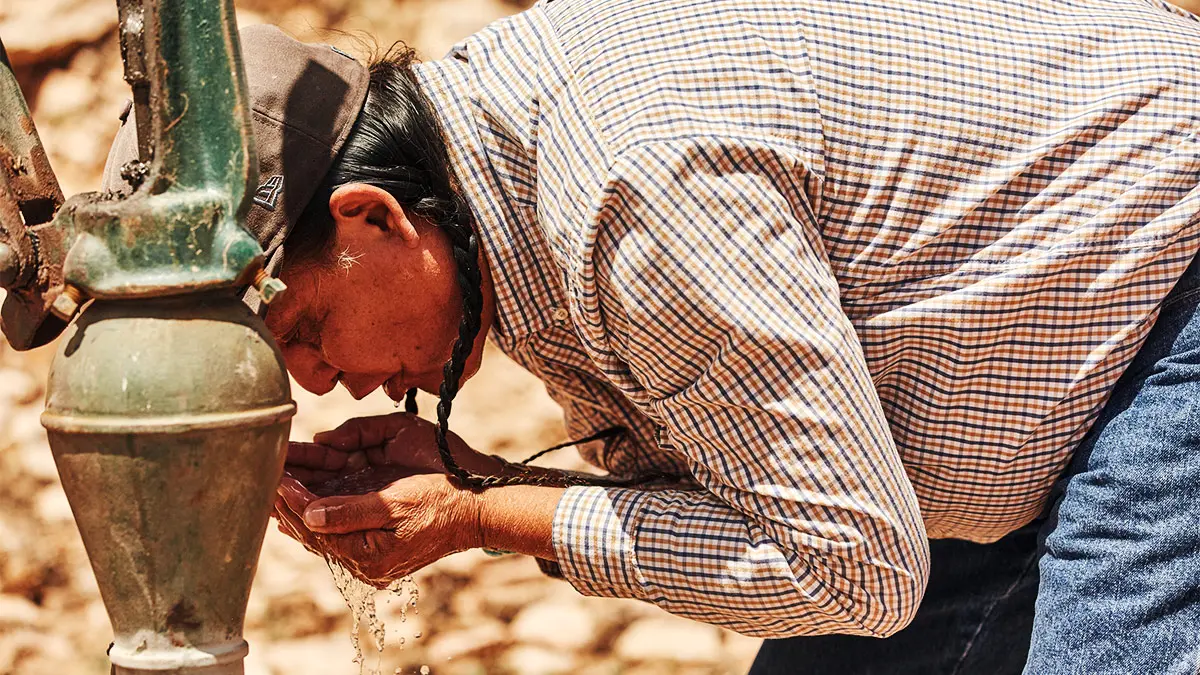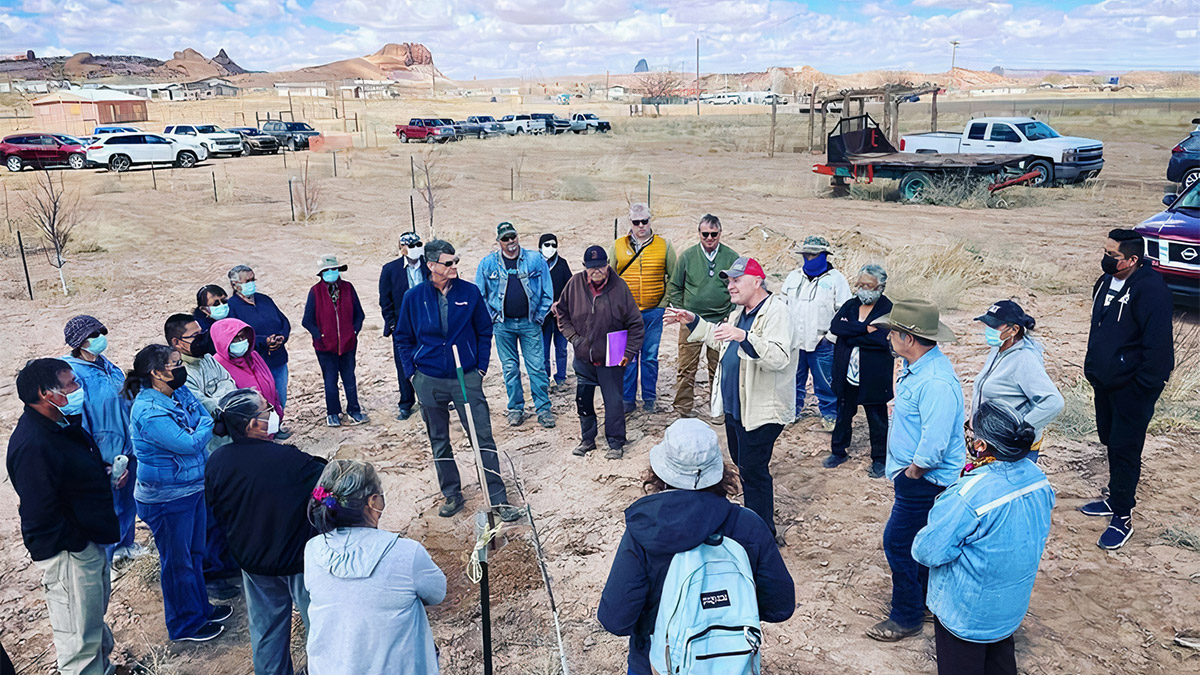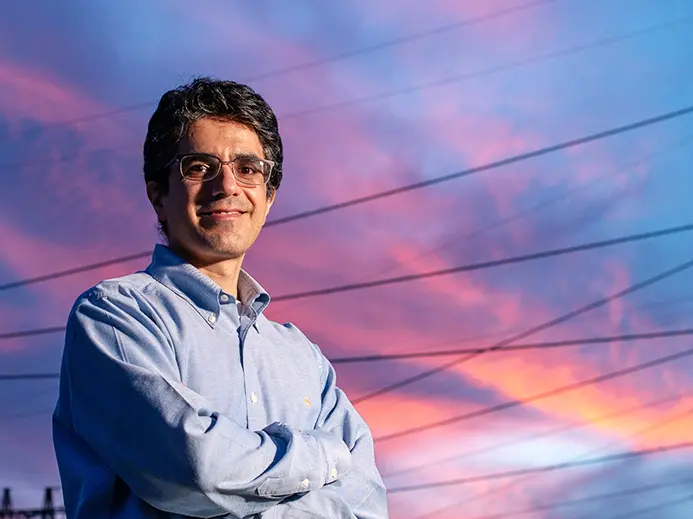Ohio State boosting water access in Navajo Nation
The Global Water Institute is digging wells, providing agricultural training and planting gardens to fill critical gaps.

Rudy R. Shebala, a member of Navajo Nation, visits a remote well often used by livestock producers — a rare source they depend on to keep their animals alive. (Photo by Matt Martian)
Global Water Institute Program Director Amanda Davey ’91, ’95, ’97 MS says although the reservation is bigger than West Virginia, there are only 13 grocery stores. “So fresh produce is scarce.”
That scarcity leads to an abundance of health problems. The Centers for Disease Control and Prevention estimates about half of the adult population of Navajo Nation has Type 2 diabetes or prediabetes, compared with roughly 10% of the U.S. adult population.
“Community gardens provide a critical source of fresh produce,” Davey says. “Our goal is to work with our Navajo partners to establish community gardens at several chapter houses [community meeting places].”
Over the summer of 2021, Ohio State team members helped install five such gardens with drip irrigation systems and water tanks. Drip irrigation, which typically uses tubing to trickle water close to plant roots, is the most effective and efficient method of keeping crops alive, Darrah says.
During a visit in March, faculty, staff and students from the institute and OSU Extension demonstrated how to manage the irrigation systems and enhance soil through composting. Rose Begay, Kayenta farm board secretary, hosted the two-day workshop for several chapter houses and their representatives.
“It’s really great to have Ohio State to partner with,” Begay says. “We want to build gardens for the community and especially the youth, as a way to motivate people to go back to farming.”
Gus Wulsin ’19, ’21 MS, a graduate student in Ohio State’s School of Earth Sciences, has been involved with the Global Water Institute since 2021. He has visited Navajo Nation twice, helping to set up the community gardens and identify wells and natural springs to be repaired or redeveloped.
“Working in the field with the people is the most enriching part of my research,” Wulsin says. “Seeing the enthusiasm from the community was both rewarding and motivating. It felt like a once-in-a-lifetime experience.”
While much work has been done, Darrah says much more lies ahead. And though the project is set up as a five-year plan, Ohio State collaborators have every intention of staying involved with Navajo Nation far into the future.
The Ohio State University Global Water Institute
Founded in 2016, the Global Water Institute addresses complex water issues in Ohio and other places around the world, sharing its expertise in research, teaching and outreach, and partnering with industry, education, governmental and nongovernmental organizations to offer assistance.
The institute’s Navajo Nation project
- Ohio State partners include faculty, staff and students from five colleges — Engineering; Arts and Sciences; Public Health; Food, Agricultural and Environmental Sciences; and Fisher College of Business — as well as the International Programs in Agriculture and OSU Extension.
- Other partners include Assist International, Duke University, Suez WTS Systems USA, WorldServe International, The Coca-Cola Foundation and Navajo Nation.
- Learn more about the project on this Global Water Institute webpage.
Help Navajo Nation
GWI’s project to provide sustainable, clean water to the people of the Navajo Nation is funded by private donors. You can help.





